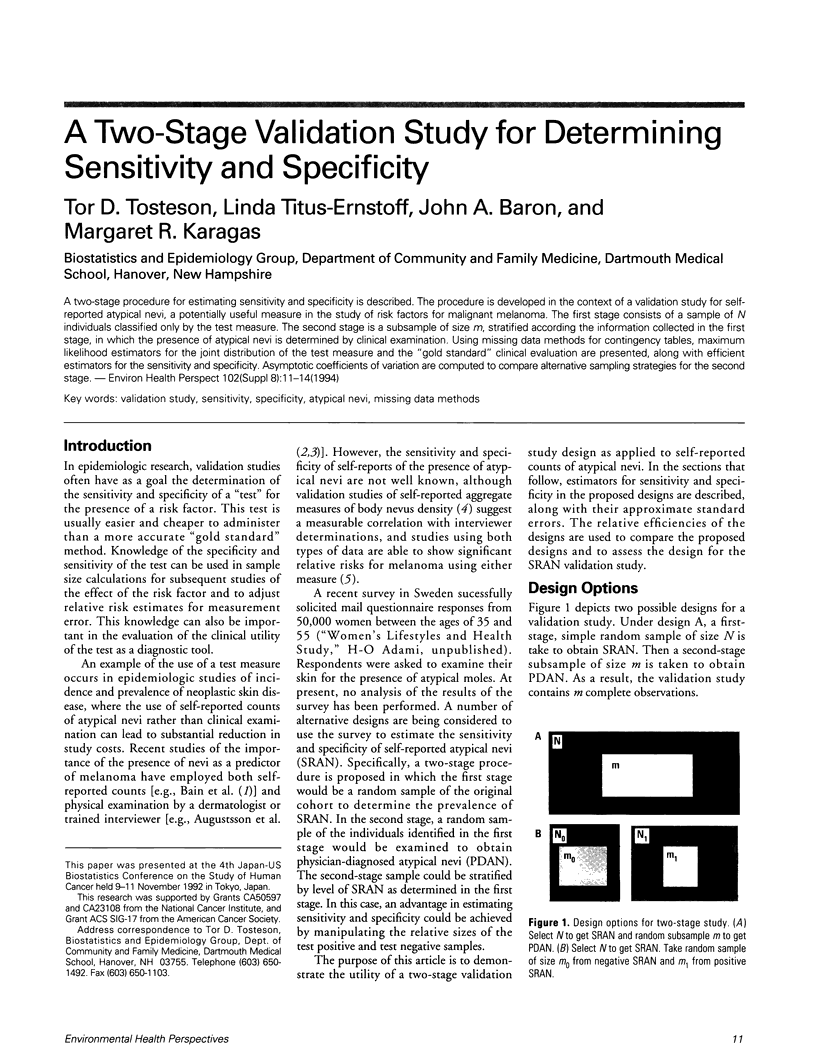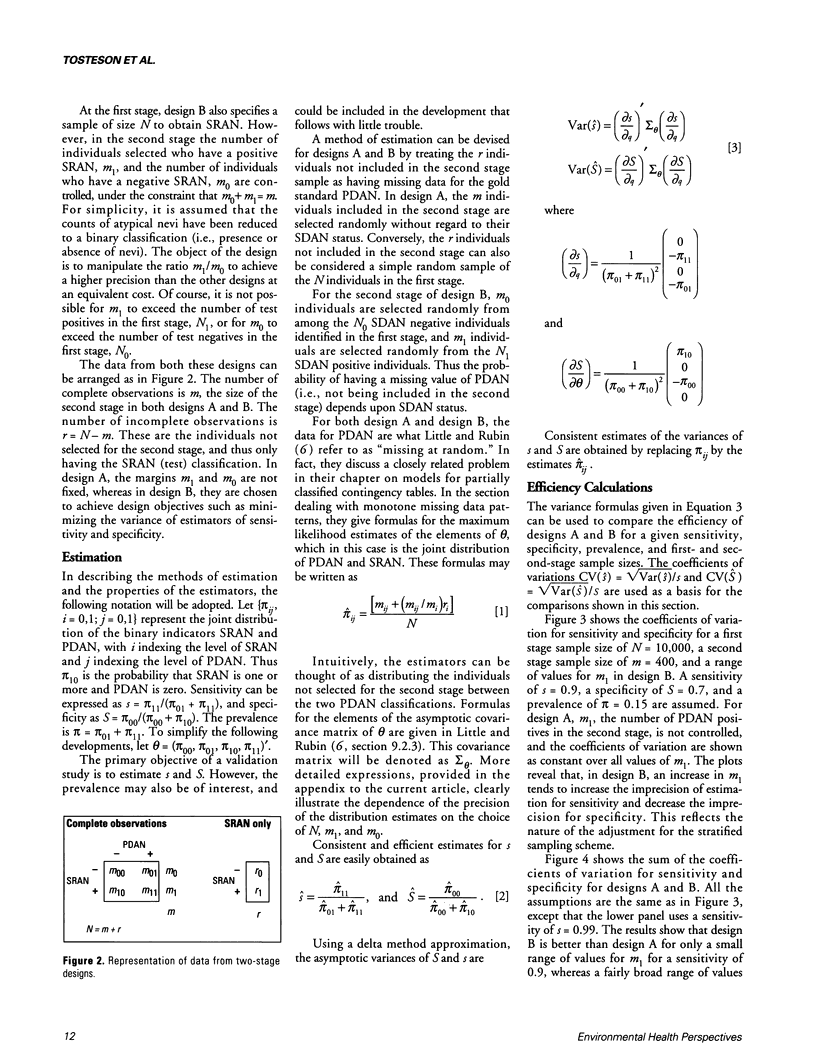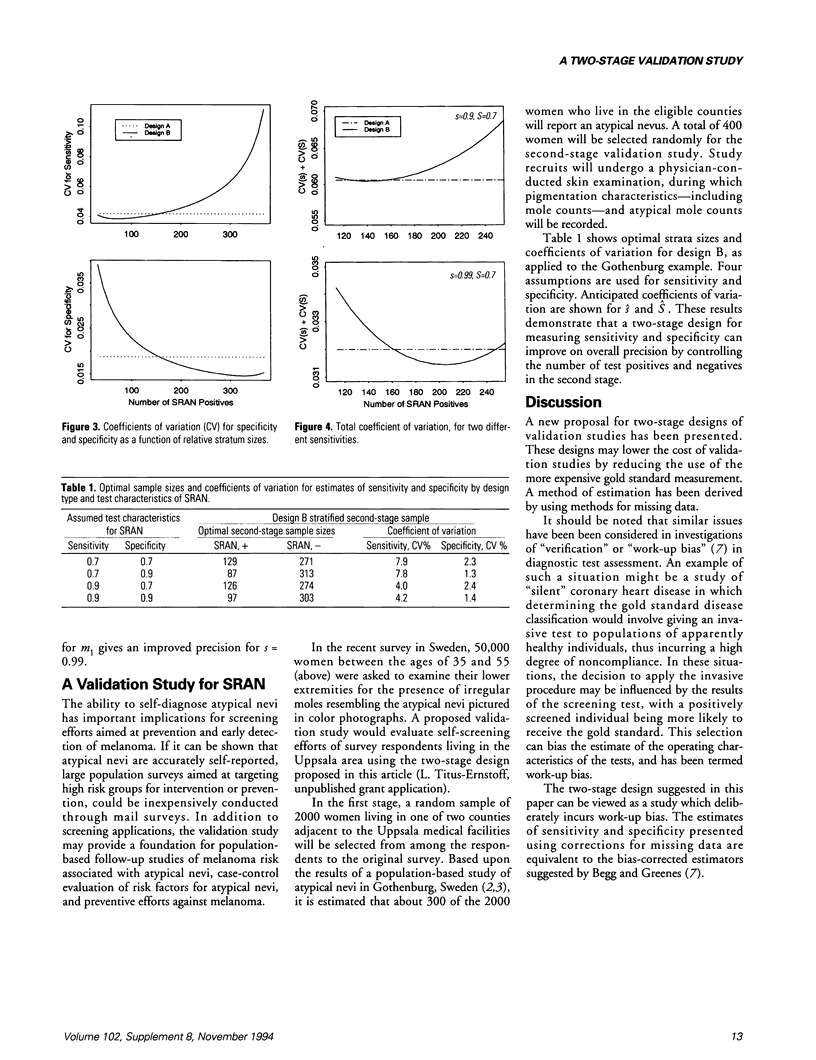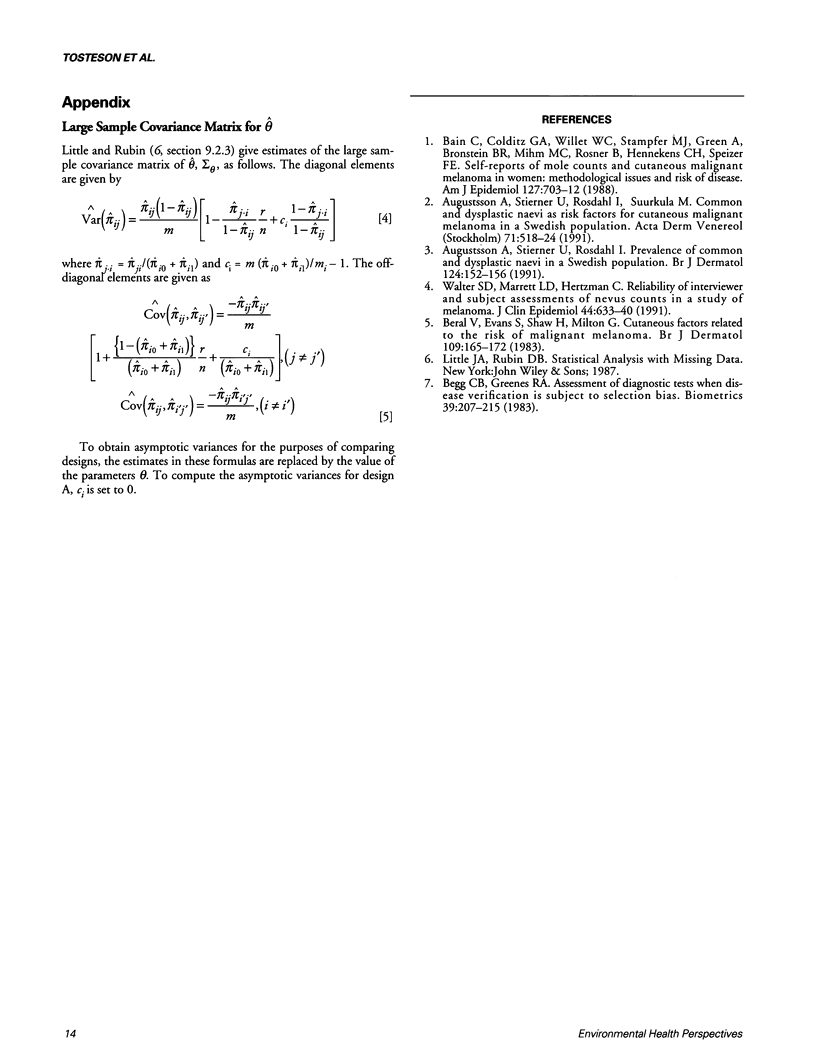Abstract
A two-stage procedure for estimating sensitivity and specificity is described. The procedure is developed in the context of a validation study for self-reported atypical nevi, a potentially useful measure in the study of risk factors for malignant melanoma. The first stage consists of a sample of N individuals classified only by the test measure. The second stage is a subsample of size m, stratified according the information collected in the first stage, in which the presence of atypical nevi is determined by clinical examination. Using missing data methods for contingency tables, maximum likelihood estimators for the joint distribution of the test measure and the "gold standard" clinical evaluation are presented, along with efficient estimators for the sensitivity and specificity. Asymptotic coefficients of variation are computed to compare alternative sampling strategies for the second stage.
Full text
PDF



Selected References
These references are in PubMed. This may not be the complete list of references from this article.
- Augustsson A., Stierner U., Rosdahl I., Suurküla M. Common and dysplastic naevi as risk factors for cutaneous malignant melanoma in a Swedish population. Acta Derm Venereol. 1991;71(6):518–524. [PubMed] [Google Scholar]
- Augustsson A., Stierner U., Suurküla M., Rosdahl I. Prevalence of common and dysplastic naevi in a Swedish population. Br J Dermatol. 1991 Feb;124(2):152–156. doi: 10.1111/j.1365-2133.1991.tb00424.x. [DOI] [PubMed] [Google Scholar]
- Bain C., Colditz G. A., Willett W. C., Stampfer M. J., Green A., Bronstein B. R., Mihm M. C., Rosner B., Hennekens C. H., Speizer F. E. Self-reports of mole counts and cutaneous malignant melanoma in women: methodological issues and risk of disease. Am J Epidemiol. 1988 Apr;127(4):703–712. doi: 10.1093/oxfordjournals.aje.a114851. [DOI] [PubMed] [Google Scholar]
- Begg C. B., Greenes R. A. Assessment of diagnostic tests when disease verification is subject to selection bias. Biometrics. 1983 Mar;39(1):207–215. [PubMed] [Google Scholar]
- Beral V., Evans S., Shaw H., Milton G. Cutaneous factors related to the risk of malignant melanoma. Br J Dermatol. 1983 Aug;109(2):165–172. doi: 10.1111/j.1365-2133.1983.tb07077.x. [DOI] [PubMed] [Google Scholar]
- Walter S. D., Marrett L. D., Hertzman C. Reliability of interviewer and subject assessments of nevus counts in a study of melanoma. J Clin Epidemiol. 1991;44(7):633–640. doi: 10.1016/0895-4356(91)90024-4. [DOI] [PubMed] [Google Scholar]


